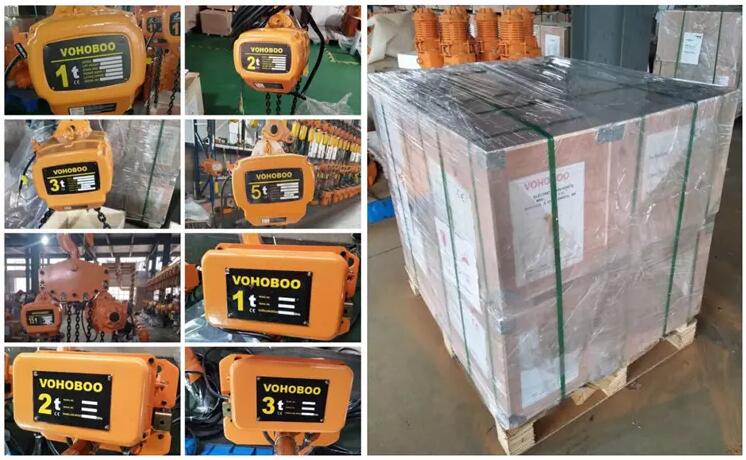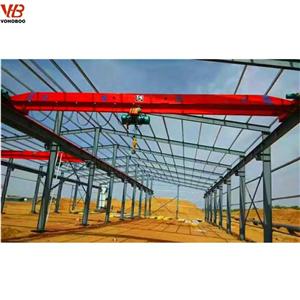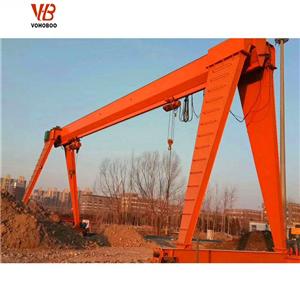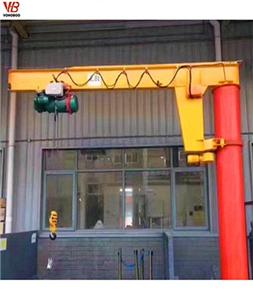Diagnosis and treatment of common faults of electric hoist
Electric hoist is a light and small lifting equipment, mainly used in bridge cranes below 10 tons. Because of its light and flexible, diverse forms, simple operation, convenient maintenance, it is widely used in enterprises. The following is a detailed analysis of the causes of some common faults of electric hoists.
1. Electric hoist cannot start and run
(1) First check whether the power fuse is blown. If one phase is broken, the motor will start in a single phase, the starting torque will be zero, and the motor will not turn. You should replace enough fuse.
(2) Secondly, the grid voltage is too low, the starting torque is proportional to the square of the voltage, the acceleration torque cannot overcome the load torque, and it cannot reach the operating speed. The grid voltage should be appropriately increased.
(3) The stator windings are short-circuited, grounded or disconnected. When the winding grounding occurs at the grounding plate of the lead wire, the terminal box should be opened for inspection. When disconnecting, not only check the motor, but also first check whether the control equipment wiring is striving. If the contact of the AC contactor is not good and the line cannot be connected, use sandpaper to smooth the contact mark of the contactor. Also check the core pull-in and Disconnection, whether there is jamming, if necessary, change the contactor.
(4) Excessive load or failure of transmission machinery
Generally, it is reasonable for the electric hoist to match the power of the motor, and the lifting weight cannot be overloaded. If the electric hoist cannot rotate, remove the load first. If the motor can start normally, it means that the transmission mechanism such as the reducer is faulty. Clear the fault.
2. Electric hoist has abnormal noise or excessive vibration
2.1 Noise generated by the motor itself
(1) Sudden abnormal sound during operation. It should be checked whether the motor is running in single phase: one is that the power is disconnected from one phase, and the other is that the motor is disconnected from one phase. In this case, you must stop using it, otherwise it is easy to burn the motor.
(2) Unbalanced three-phase power of the motor will also generate abnormal electromagnetic sounds. The three-phase current should be carefully detected. Generally, it does not exceed 10%, and the three-phase current is unbalanced. First, the voltage of the power grid is unbalanced. Phenomenon; the third is that the air gap of the rotor is not uniform; the fourth is that the rotor has broken bars. For the thin strip phenomenon, you must analyze the motor fault through abnormal sounds and take measures to solve it as soon as possible.
2.2 Noise from mechanical friction
Motor mechanical failures are:
(1) stator and rotor phase rubbing
Because the gap between the stator and the rotor is very small, there are often uneven air gaps, iron filings, burrs, and paint films in the motor are not completely removed, which not only increases noise, but also increases vibration significantly. In severe cases, the core is locally overheated and the windings are insulated. Damage should be dismantled in a timely manner.
(2) Bearing oil leakage and bearing overheating
It is mainly caused by too much or too little bearing grease, unclean grease, poor bearing quality, etc. During operation, I hear a “chuckling” sound. The bearing should be dismantled and cleaned in time to observe the surface of the raceway and check the relevant dimensions Thick re-use measures.
In addition to the mechanical failure of the motor, it is also necessary to check whether the coupling connected to the reducer is rotating, whether the concentricity meets the requirements, the installation foundation is uneven, the shaft extension is bent, the transmission unit is unbalanced, and other factors will produce abnormal noise, and the corresponding vibration will also Increase, the user should judge the fault caused by the motor by the sound heard and solve it in time.
3. Reducer failure
3.1 reducer oil leakage
The oil leakage of the reducer is mainly due to the seal between the box and the cover is not tight, or the assembly is poor or the seal is aging and failed. Check and handle after shutdown.
3.2 Reducer fever
(1) The heat of the reducer is generally caused by too much lubricant in the gearbox. At this time, the oil level inspection hole should be opened and the excess oil can be discharged. At the same time, check whether there is any impurities in the oil.
(2) The bearing of the reducer is hot, first open the oil level inspection hole bolts. If there is oil flowing out, but there is little, it means that the amount of oil is appropriate, then release the oil of the reducer to see if there are impurities in the oil; Then open the bearing cover, check the bearing support intact, and replace the bearing if it is broken.
(3) Check the wear of the reduction gear and make necessary repairs.





